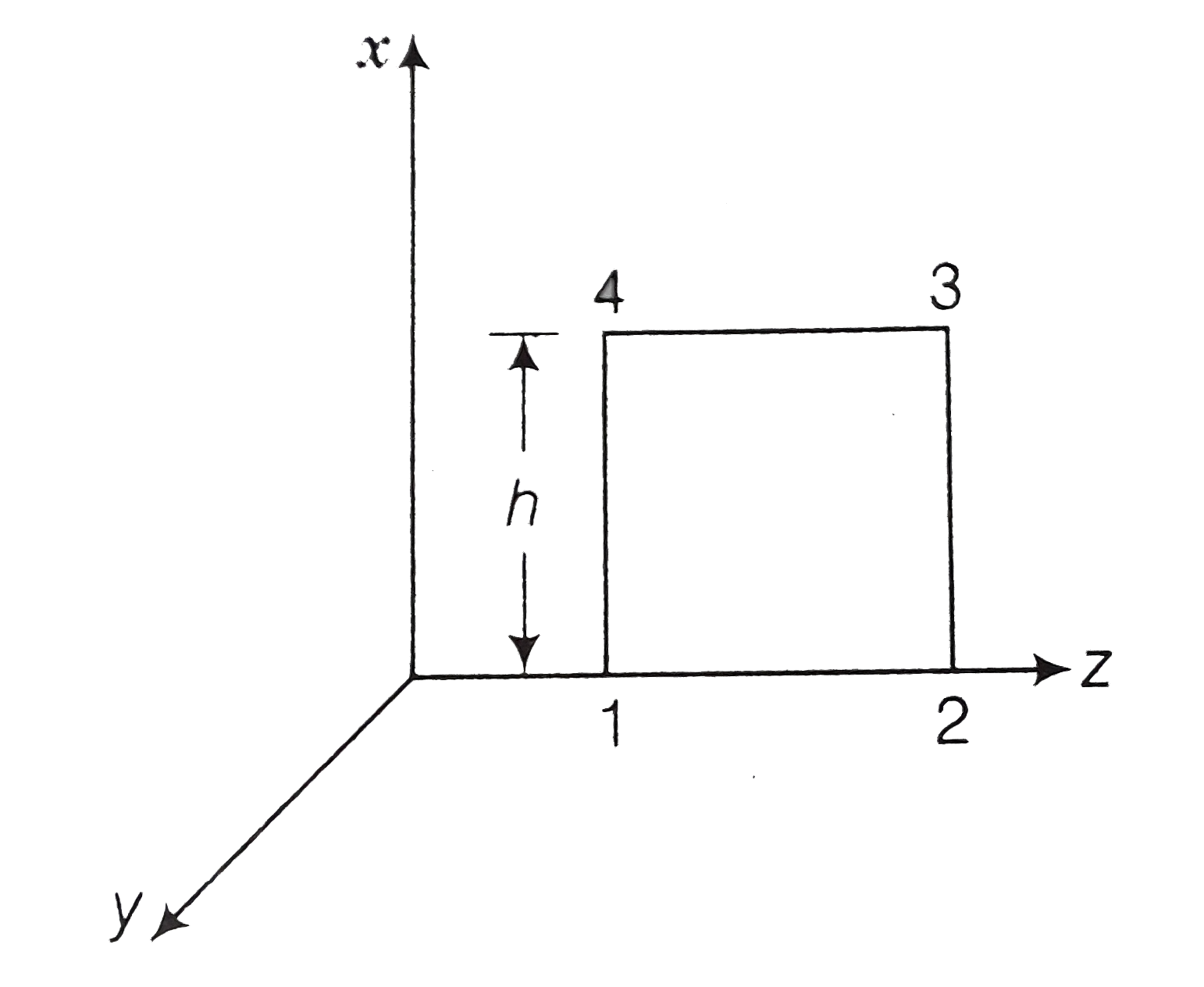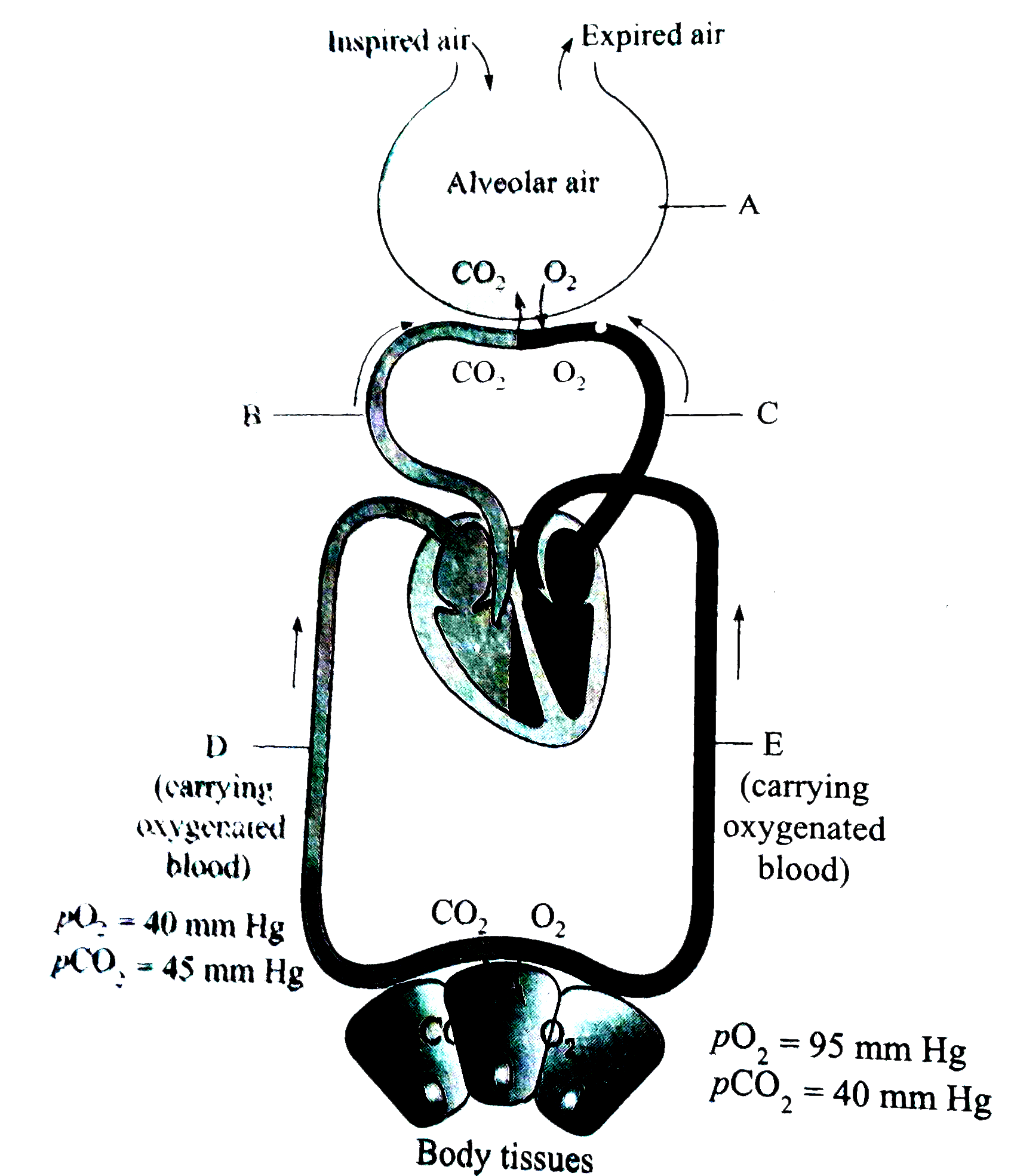An e.m. wave travels in vacuum along z direction:
→E=(E1ˆi+E2ˆj)cos(kz−ω). Choose the correct option from the following :
The associated magnetic field is given as →B=1c(E1ˆi+E2ˆj)cos(kz−ωt)
the associated magnetic field is given as →B=1c(E1ˆi−E2ˆj)cos(kz−ωt).
The given electromagnetic field is circularly polarised .
the given electromagnetic wave is plane polarised
The correct Answer is:A, D
The electric field vector is given by
→E=(E1ˆi+E2ˆj)cos(kz−ωt)
the associated magnetic field vector will be thus given by
→B=→Ec=(E1ˆi+E2ˆjc)cos(kz−ωt)
hence , option (a) is correct .
when electric field and magnetic fields are in same phase then wave is called plane polarised . when there is a plane difference of π/2 between electric and magnetic field then wave is called circularly polarised . IF we select option (a) as correct then given wave is plane polarised
the correct options are (a) and (d) .
Topper's Solved these Questions
- ELECTROMAGNETIC WAVESBOOK - MODERN PUBLICATIONCHAPTER - ELECTROMAGNETIC WAVESEXERCISE - NCERT FILE ( NCERT EXEMPLAR PROBLEMS SUBJECTIVE QUESTIONS ) ( VERY SHORT ANSWER TYPE QUESTIONS )
7 Videos
- ELECTROMAGNETIC WAVESBOOK - MODERN PUBLICATIONCHAPTER - ELECTROMAGNETIC WAVESEXERCISE - NCERT FILE ( NCERT EXEMPLAR PROBLEMS SUBJECTIVE QUESTIONS ) ( SHORT ANSWER TYPE QUESTIONS )
7 Videos
- ELECTROMAGNETIC WAVESBOOK - MODERN PUBLICATIONCHAPTER - ELECTROMAGNETIC WAVESEXERCISE - NCERT FILE ( NCERT ADDITIONAL EXERCISES )
4 Videos
- ELECTROMAGNETIC INDUCTIONBOOK - MODERN PUBLICATIONCHAPTER - ELECTROMAGNETIC INDUCTIONEXERCISE - CHAPTER PRACTICE TEST FOR BOARD EXAMINATION
14 Videos
- ELECTROSTATIC POTENTIAL AND CAPACITANCE BOOK - MODERN PUBLICATIONCHAPTER - ELECTROSTATIC POTENTIAL AND CAPACITANCE EXERCISE - Chapter Practice Test
9 Videos
Similar Questions
As the e.m waves travel in free spaces
View SolutionA plane EM wave travelling in vacuum along z-direction is given by E=E0 sin (kz−ωt)ˆi and B=B0 sin (kz−ωt)ˆj
(i) Evaluate ∫E.dl over the rectangular loop 1234 shown in figure.
(ii) Evaluate ∫B.ds over the surface bounded by loop 1234.
(iii) Use equation ∫E.dl=−dϕBdt to prove E0B0=c.
(iv) By using similar proces and the equation
∫B.dl=μ0I+ε0dϕEdt, prove that c1√μ0ε0

View Solution
Knowledge Check
An e.m. wave trevels in vacuum along z direction:
→E=(E1ˆi+E2ˆj)cos(kz−ωt). Choose the correct option from the following :AThe associated magnetic field is given as →B=1c(E1ˆi+E2ˆj)cos(kz−ωt)BThe associated magnetic field is given as →B=1c(E1ˆi−E2ˆj)cos(kz−ω)CThe given electromagnetic field circular polarisedDThe given e.m. wave is plane polarisedAn electromagnetic wave travelling along z-axis is given as E=E0 cos (kz−ωt). Choose the correct options from the following
AThe associated magnetic field is given as →B=1cˆk×→EBThe e.m. wave field can be written in terms of the associated magnetic field as →E=c(→B×׈k)Cˆk.→E=0,ˆk.→B=0Dˆk×→E=0,ˆk×→B=0An electromagnetic wave travelling along z-axis is given as E=E0 cos (kz−ωt). Choose the correct options from the following
AThe associated magnetic field is given as B=1cˆk×E=1ω(ˆk×E)BThe electromagnetic field can be written in terms of the associated magnetic field as E=c(Bxˆk)Cˆk.E=0,ˆk.B=0Dˆk×E=0,ˆk×B=0
Identify A to E choose the correct option accordingly .

View SolutionA plane electromagnetic wave travels in vacuum along z-direction. What can you say about the direction of electric and magnetic field vectors ?
View SolutionA plane electromagnetic wave travels in vacuum along z-direction. What can you say about the direction of electric and magnetic field vectors?
View SolutionA plane EM wave travelling along z direction is described by
E=E0sin(kz−ωt)ˆiandB=B0sin(kz−ωt)ˆj.
show that
(i) The average energy density of the wave is given by uav=14ε0E20+14B20μ0.
(ii) The time averaged intensity of the wave is given by Iav=12cε0E20.
View Solutionchoose e correct option w.r.t. leg- haemoglobin
View Solution